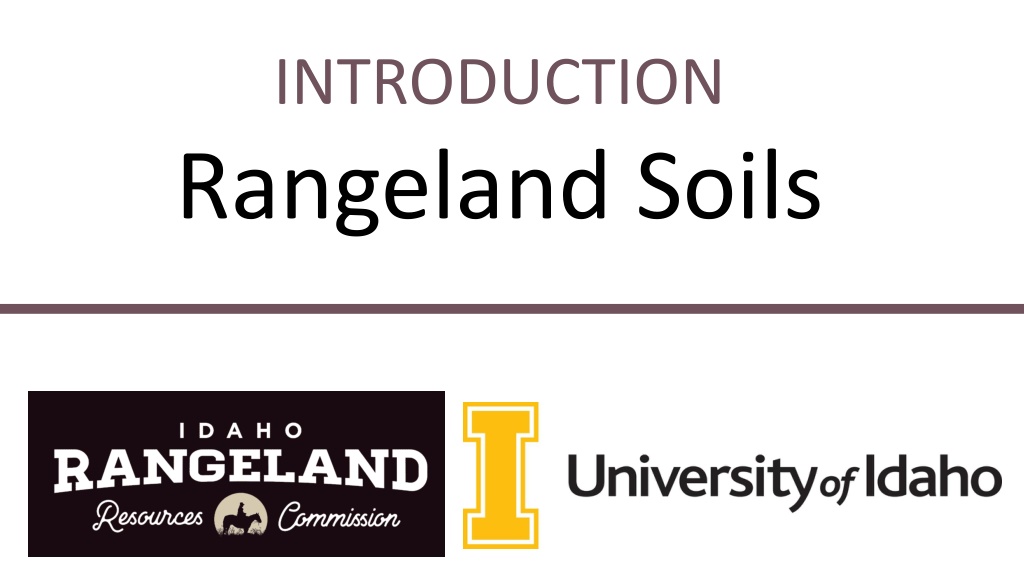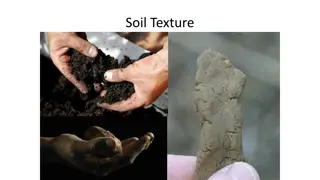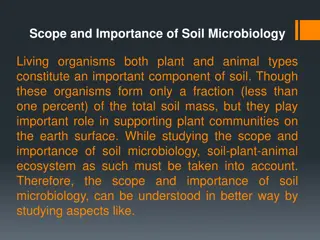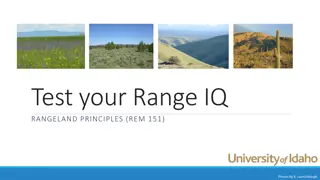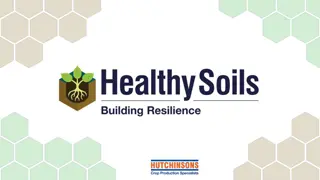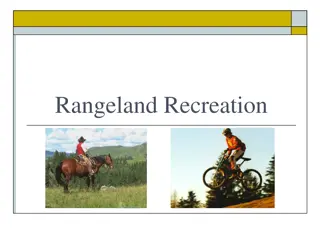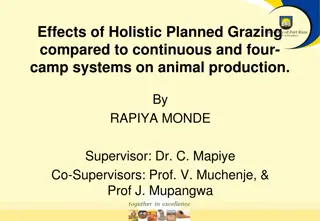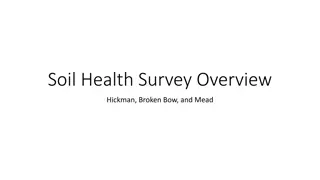Understanding Soil Texture and Its Impact on Rangeland Health
Soil texture, determined by the proportion of sand, silt, and clay, plays a crucial role in rangeland health. It affects pore spaces, water infiltration and percolation, water-holding capacity, aeration, erodibility, and compactability. Different particle sizes influence these soil properties, with sand providing good water infiltration, silt offering medium percolation, and clay having high water-holding capacity but low aeration. Understanding these factors is essential for managing rangeland soils effectively.
Download Presentation

Please find below an Image/Link to download the presentation.
The content on the website is provided AS IS for your information and personal use only. It may not be sold, licensed, or shared on other websites without obtaining consent from the author. Download presentation by click this link. If you encounter any issues during the download, it is possible that the publisher has removed the file from their server.
E N D
Presentation Transcript
INTRODUCTION Rangeland Soils
The texture of a soil depends upon the proportion of sand, silt, and clay that are in the soil. The texture and soil structure (how the soil particles are arranged), influence the amount of pore spaces (or air) found within the soil. Pores are important conveyors of water, nutrients, and air, as well as provide space for roots to grow.
Particle Sizes SAND SILT CLAY Size of Particles (Small, Medium, or Large) Describe the pore space for each particle size (also called porosity). Are they large or small, or somewhere in the middle? Water-Infiltration Capacity: how well will water enter the soil? Poor, Medium, or Good Water Percolation: how well will water flow through the soil? Poor, Medium, or Good Water-Holding Capacity: how much water will the soil hold before it is moved too low by gravity and plant roots can t reach it? Poor, Medium, or Good Aeration: how much air is in the soil? Poor, Medium, or Good Erodibility: how likely is wind and water going to be able to move the soil? Low, Medium, or High Compactability: if you were to make a ball of the soil, how likely would it stay in the ball shape without falling apart? Low, Medium, or High
Particle Sizes SAND SILT CLAY Size of Particles (Small, Medium, or Large) Large tennis ball Medium marble Small BBs Large large pore spaces allow water to easily run through it and beyond the reach of roots. Small pore spaces are smaller and hold more water, however, small particle sizes also form strong bonds making water and nutrients unavailable for root uptake. Describe the pore space for each particle size (also called porosity). Are they large or small, or somewhere in the middle? Medium Water-Infiltration Capacity: how well will water enter the soil? Poor, Medium, or Good Good Medium Poor (see note under erodibility) Water Percolation: how well will water flow through the soil? Poor, Medium, or Good Good Medium Poor (see note under erodibility) Water-Holding Capacity: how much water will the soil hold before it is moved too low by gravity and plant roots can t reach it? Poor, Medium, or Good Good as particle size decreases, surface area increases. Clay has about 10,000 times as much surface area as sand. Poor sandy soils are more drought-prone Medium Aeration: how much air is in the soil? Poor, Medium, or Good Good Medium Poor Low clay particles combine to create large masses (or aggregates). Aggregates also decrease the ability of water to infiltrate the soil and drain. Erodibility: how likely is wind and water going to be able to move the soil? Low, Medium, or High Low High Compactability: if you were to make a ball of the soil, how likely would it stay in the ball shape without falling apart? Low, Medium, or High Low Medium High
